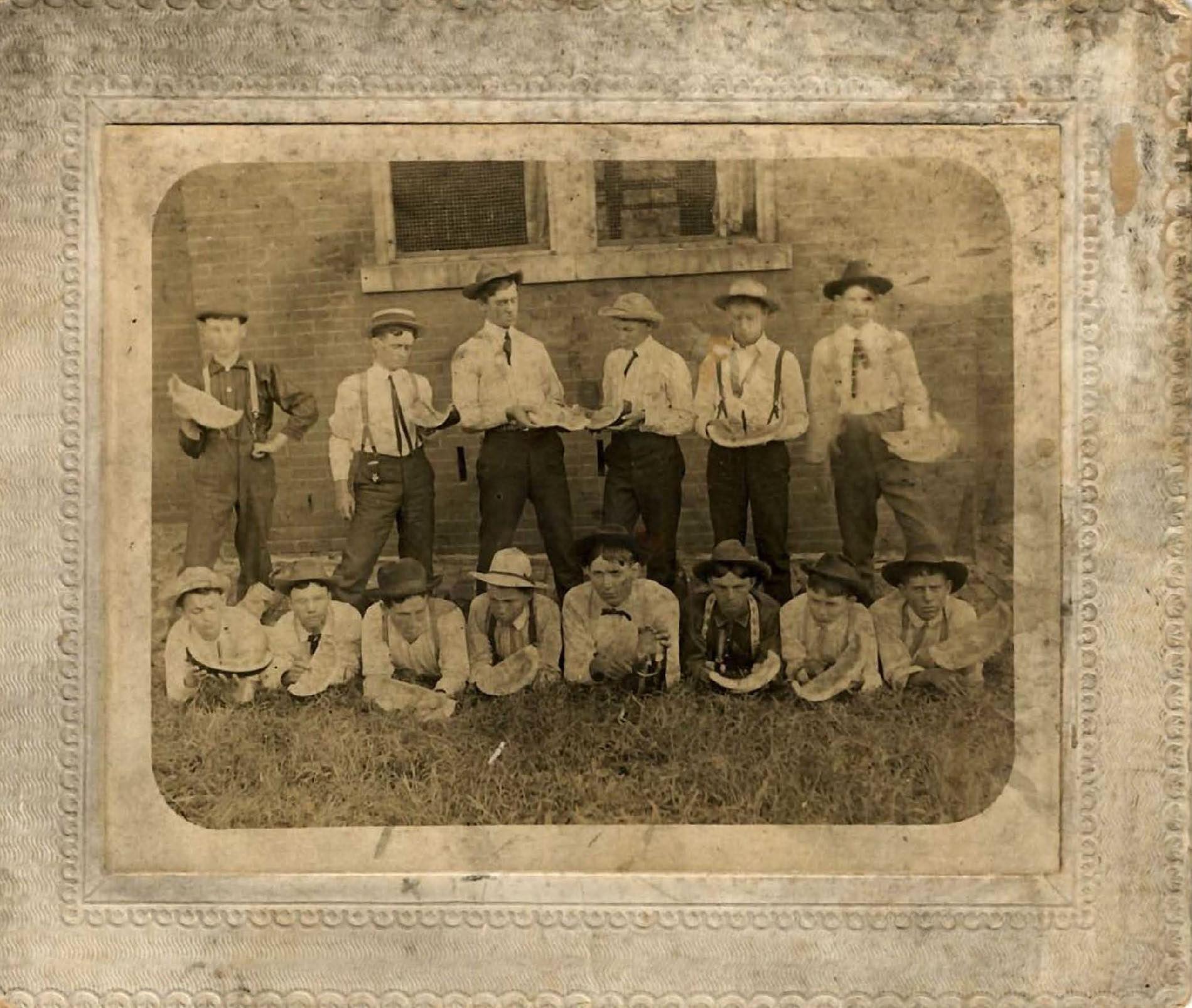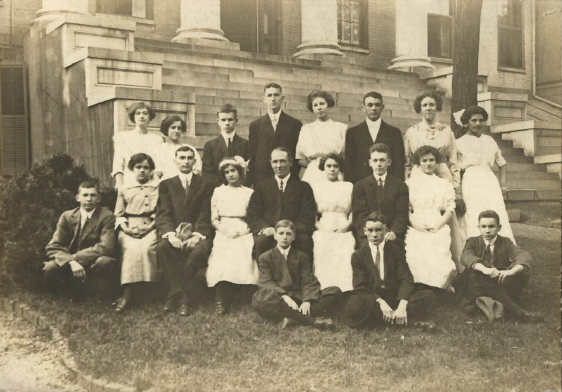1865 - 1924
1865 - 1924
RECONSTRUCTION AND GROWTH
AFTER THE CIVIL WAR
 Staff and Students in 1900
Staff and Students in 1900In 1866, the legislation acting upon Governor William G. Brownlow’s recommendation passed an Appropriation that the school would receive $5,000 to repair the buildings and grounds damaged from the Civil War, and refurnish the school with books, materials, and equipment. In addition, $5.000 was appropriated annually to sustain the school. That same year, the school reopened with 39 students in attendance, with only the main building reconditioned and refurnished. However, 1868-1885 were considered to be improvement years for the school. A home for the principal was built, along with a stable, and wooden houses that were built from the material saved from the homes that were torn down on the property.
In 1871, the House passed a bill establishing a Mechanical Department. A practical printer of the city had been secured and was giving daily instruction to 10 boys in the printing office. In 1876, the boys began printing a little one-page paper titled "The Silent Observer". It later developed into a much larger paper of 8 pages and were printed monthly.
In 1879, a new chapel was built at the end of the girl’s wing of the main building. The old chapel was converted into a dormitory for the girls, which partially relieved the overcrowded housing. After these improvements were completed, the school was able to accommodate a total of 125 students.
The years 1888-1904 held many changes to the school. Six classrooms, study halls, a library, museum, and a reading room were added. An adequate sewerage system was installed, a mechanical building and a gymnasium were completed. Additionally, a hospital was built, and final improvements were made to some of the buildings in 1899. Enrollment of 259 students in 1902 was the largest in the history of the school.
From 1904- 1921, additional teachers were hired. Also, modern equipment for the printing office and a moving picture machine were purchased, along with adding a domestic science department.
A TIME OF TRANSITION
In September of 1921, Mrs. H. T. Poore, a Knoxville native, became the new superintendent. Mrs. Poore was well qualified and very knowledgeable in Deaf culture and sign language because she had two sisters that were Deaf. After her graduation from the University of Tennessee in 1913, she taught for three years followed by becoming the county Superintendent of Education in Lewis County, Tennessee for five years.

Mrs. Poore
Mrs. Poore became the first woman superintendent of a state institution in Tennessee and the only woman superintendent of a state institution for the Deaf in the nation with an enrollment as large as the Tennessee Deaf and Dumb Asylum/School.
Since the school had been established, it was known as the Tennessee Deaf and Dumb Asylum/School. In the minds of the State of Tennessee the institution was an "asylum" and the school was located on Asylum Street. For many years the gate at the entrance of the grounds had “Deaf and Dumb Asylum” written above it.
Mrs. Poore and her administration began educating the public that Deaf does not mean "deaf and dumb". Gradually during the next few years, she succeeded to get the name changed to The Tennessee School for the Deaf.
In 1923 the Board of Administration was abolished, and the school was under the control of the newly created Department of Institutions; it later became the Department of Education in 1935. During this time very few repairs were done to the school due to the impending move to the new school site, and the grounds and buildings on Asylum Street were sold.
Credit to:
E. Conley Akin; 100th Anniversary yearbook 1845 – 1945; 150th Anniversary yearbook 1845 - 1994













